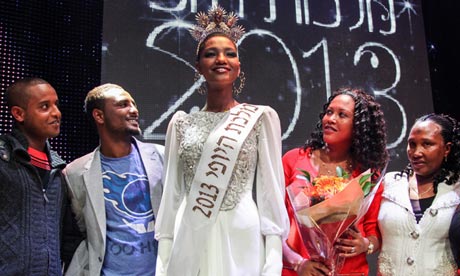
Source: www.gomio.com

Source: www.itraveljerusalem.com
In Jerusalem, I had heard of these 'free tours' of the Old City. I thought I would check it out. While going through the unique sections, I would see if there were any major differences in the people that I ran into. Here is my experience and a little practical feedback about 'free tours' in Jerusalem.
1) The Free Tour of the Old City was free but had a 'chance to thank your guide with a donation' part at the end. It sort of leads you to give what might be the equivalent of $10-20 for his time. (30 shekels or $5 if you're strapped.) You don't want to be the one giving nothing to this nice guy or gal. Everyone else there is handing him 50 and 100 shekels. He did take you around 4 sections of the Old City for 1 and 1/2 hours.
A little background on certified guides. In Israel, tour guides have to study for two years through an accredited program before they can be licensed to give tours. They take it seriously and have tests and coaches and everything.
In America we brag about famous athletes/movie stars we know. In Israel, it's tour guides.
My tour guide showed Ambassador So-and-So around.
Well, my tour guide showed the President of the United States around!
Well, my tour guide helped find the Dead Sea Scrolls and then translated them
into 15 languages!
The tour took us through the Arab, Jewish, Christian and Armenian sections of the Old City. It's very valuable real estate. Some of these coveted parts of Jerusalem cost $2500 a month in rent to live in. This ad on Jerusalem Craigslist gives an idea of what one 3-bedroom apartment looks like.
₪9000 / 3br - 90ft² - Fully Furnished, Renovated 3 Bedroom Duplex in the Old City for Rent (Old city)

3BR / 2Ba 90ft2 furnished apartment
w/d in unit
wheelchair accessible
w/d in unit
wheelchair accessible
Fully furnished, located in a prime area in the Jewish Quarter of Jerusalem's Old City.
Large porch which can be used for a Succah.
Long term rent (12 month contract) is 9,000 ILS.
Agent fee 1 months rent + VAT
http://www.yhij.net/property/fully-furnished-renovated-3-bedroom-in-the-old-city/
Please contact Dov at 0547744273 or reply to this ad.
The downside of living in these quarters is.... No, not the ethnic tensions. Not the lack of green landscaping. Or parking spots. No, the downside of living in the Old City, is the out-of-control cat population. I'm serious. It is something out of a Dr. Seuss book. I guess they keep multiplying, and no one wants to kill them.

(Source: philipintheholylands.blogspot.com )
Old City Jerusalem...downside of living in these quarters...oh yes--also, the crush of humanity around you. Strangers. Constantly invading your neighborhoods--standing in your walkways, stepping on your front porches, commenting on your exterior. When I was in the Arab neighborhood, my questions started getting some answers. I observed a few things.
2) Back on the tour, we were hearing about how, when Muslim Arabs (I specify because there are many Christian Arabs in Israel) go on Hajj (the Pilgrimage to Mecca) they come back and decorate the outside of their places with colorful paint. Near us, a 13-year old Arab boy was hanging out. I asked if he wanted to be in the backdrop of a picture of his own neighborhood. He sure let me know that was not cool with him.
He waved me off with a hand and from his facial expression and angry words, I was a total dumb foreigner and jerk for thinking of it. I am just another tourist in a long line of tourists trying to capture a special moment in my once-in-a-lifetime Holy Land trip that he was inconvenienced by. I could understand his rude attitude and impatience.
I wanted to make an assumption about Arab boys and their manners. I decided to wait and see how things went in the Jewish Quarter.
We were on our way to see beautiful doorways in the Armenian Section. On one of the narrow walkways, a 13-year old Jewish boy rudely pushed past me with his bike. He didn't even look to see if he had jabbed me with his handlebars or offer an 'excuse me.'
There you have it. 13 year-old boys. In both cultures, in this same region, they both had that same snotty, uppity attitude. They both had that, 'What are these tourists doing here? This public avenue is my personal bike path/skate park/soccer field/set of stairs.."
I smiled realizing. I hadn't run into an Arab thing. Or a Jewish thing. I had run into a 13 year-old boy kind-of-thing. Their age was an international explanation for a brusque, rude attitude and devil may care aloofness.
(No, I don't think all 13 year old boys in the Jewish, Arab, Christian or Armenian quarters are rude. There's just something about that age, right?)
3) The tour continued with a look at the famous Hurva Synogogue. This part of the post leads me to another topic deep in my experience and close to my heart. Many Christians love Israel and its people but Christians know so little about Israel and its people, the Jews. We share a heritage. They are the original Olive Branch brethren.
 Most of what I have gleaned about Israel or Jerusalem, is from some historical novels I loved and read in high school. They were written by the husband and wife author team: Bodie and Brock Thoene (Tay-nee) and were called The Zion Chronicles. It was a good read for a high schooler. There were stunning word pictures and an intriguing subject matter. Her historical fiction had a palpable impact on me.
Most of what I have gleaned about Israel or Jerusalem, is from some historical novels I loved and read in high school. They were written by the husband and wife author team: Bodie and Brock Thoene (Tay-nee) and were called The Zion Chronicles. It was a good read for a high schooler. There were stunning word pictures and an intriguing subject matter. Her historical fiction had a palpable impact on me.Towards the end of the tour, we stopped at The Hurva, the most-famous synagogue in the Jewish Quarter. In spite of its petal-shaped stained-glass windows, all I could see was Hannah the Cook from Bodie's book, slaving over an industrial-sized kettle, trying to stretch the meager broth of vegetables to feed 1700 Jews trapped in the Old City during the 1948 Siege.
There, (near the current Mamilla Mall) was the Jewish Agency where the plucky American red-head, Ellie, worked as a photo-journalist. Having to live there because of the war, she set up an anniversary dinner for her husband in a basement room, trying to recreate her honeymoon suite from the King David Hotel; while bombs rocked the building above her.
I looked up at the City Ramparts, and there was Dawid (David) with his little yarmulke and fluffy white dog, Moshe (Moses). They were scampering high on top of the walls, running past British guards...finding hidden passageways in the rubble below. Priceless food stuff had been left behind. One abandoned bakery had flatbread stacked as high as the ceiling. Its owner, an Arab, had baked them before he left, in hope that his Jewish friends would find them and hold off starvation.
These were the people I saw and the stories that came back in the places we toured. Places brought into living and breathing color by these Zion Chronicles. The experience they painted with their characters in the Holy Land was more real than being in Jerusalem in the present 2010 year.
Little does the Jewish community realize how Christians in the West have fallen in love with them and their heritage, evoked through these well-penned narratives.
If you want to take a trip to the Holy Land but time or money is in short supply, I would highly recommend this series. When you do go, Israel will seem even more dear and real to you.
Thus sums up a free tour of Jerusalem's Old City: Donate. And a Tale of Two Boys: People will be people. Do you have a cultural exchange experience? I would love to hear it!


























